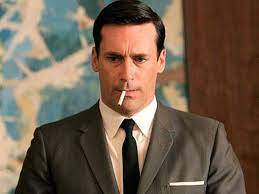
See, that’s what data is for.

See, that’s what data is for.
When it comes to the verbiage to use on my ads, I use data to determine the best tone for my audience — and I can a/b test to produce a conversion funnel that ensures I get my money’s worth. When it comes to distribution, I use data to model out my most effective channels, increasing impressions after each campaign based on targeting an ever more niche, but most likely to convert, audience. And when it comes to customer experience and staying in touch with brand fans, I use data to show me that my audience interacts best with social media updates in the a.m., but they open and share content via email at a much higher rate when that email is sent in the evenings.
Data tells me all of that — not my glass of whiskey (if I am so inclined).
Now, more than ever, the feedback loop between consumer consumption and brand creation is increasingly short. So short, in fact, that a brand’s first-party data can inform creative in such a way that individual ads may appear to consumers as personally customized — and to an extent, they are.
In fact, big data is very much customizing our individual world’s, creating an atmosphere of delight where our favorite brands sponsor our favorite authors and that author drinks our favorite soda while watching our favorite team at our favorite stadium where we happen to be eating our favorite hot dog. This is the new manifest destiny, the new American dream, if you will — a data-driven world based on convenience and heightened user experience for everyone.
Data companies have taken massive advantage of this opportunity and are using it to build software that feeds our collective egos. Typical marketing and advertising questions such as “Did they like it,” or “Who did this appeal to most” are easily answerable with the proper data platforms (of which Umbel is one, of course!). But, it’s these questions in combination with actionability that will truly create our personalized on and offline world.
And this is where the modern day Don Draper comes in.
What would such a creative mind do with such a wealth of information on his audience, the ability to find and target niche segments, the opportunity to create conversion funnels and optimize them before, during and after every single campaign? What would Don Draper do when presented with identity data points and challenged to solve creatively for a very real, number-based problem (after all, that’s what data is)?
He’d probably do away with banner ads (much like Vox), focus on sponsorship content (looking at you native advertising), seek out and build better brand relationships with companies his audience has a high affinity toward (and then have that company pay a premium price for engaged eyeballs). In other words, he’d effectively change the entire online experience, combining offline behaviors (which translate to personality and lifestyle markers) with user-given digital desires (think e-commerce and social media brand engagement) to foster loyal customers and make his clients more money time after time.
This is the current big data opportunity, but it will take a brave creative like Draper to fully impose the new lay of the land — whiskey optional this time around.